| The Quad THE DX ANTENNA !! |
| Surviving after 7 years of strong winds, cockatoos and possums! |
| Above: This is a 2 element wire helical mini beam for Eleven Meters, built from PVC tubing and copper wire. Elements are only 5' wide. Although having a narrow bandwidth, gain was very good, and it proved to be an excellent antenna for going portable! See "Radio Notebook" |
| The "Bushman's Quad" - my first experimental 2-element quad, built from "scrap" materials and costing $40. Results were very surprising! |
| Brushtail Possums frequently inspect my handywork and try to improve the VSWR! |
| BIBLE OF THE QUAD ANTENNA |
| Left: A 3 Element quad during testing. Note: Spreaders are constructed from light weight aluminiun tubing and hard wood dowelling. |
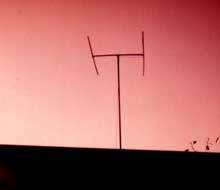 |
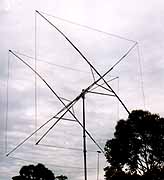 |
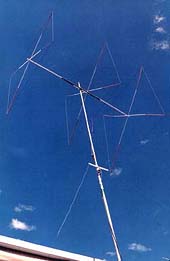 |
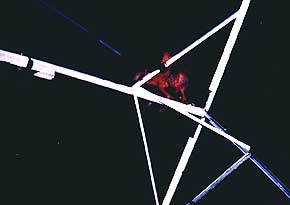 |
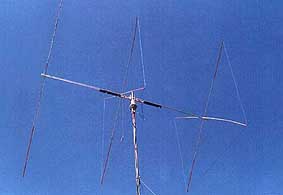 |
 |
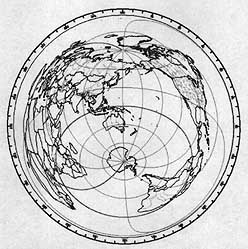 |
| A very useful addition to the shack when using a beam antenna is a Great Circle Map centred on your location. This one is for Sydney, Australia . You can create one for your location online at: http://www.wm7d.net/azproj.shtml |
| See "Radio Note Book" section for details on a simple Quad design. also information on RF Safety, something we should all be aware of! |
| Those of you who might interested in building this type of antenna should read "All About Cubical Quad Antennas" by William I. Orr, W6SAI. Try to beg, borrow or steal, as it is one of the most useful and practical books on the building and adjustment of these wonderful DX antennas. The book is available in paperback and has been reprinted a number of times. Also worth reading is his other book on "Wire Antennas", a no-nonsence, practical book with tons of information on antennas and ground systems, lightning protection, masts and feed-lines, Gama Matches, etc. Born in the South American jungle in 1939, when a group of radio engineers installed for Radio HCJB in Ecuador what is believed to be the first quad antenna. Over the years it gained popularity as an outstanding antenna and is used worldwide by Amateurs and 11-Meter operators. It is a great low-noise "listening" antenna that will pull in the DX where others fail! Like me, you will soon be converted. |
| One of the great pleasures in messing about with radio, is that with just a little effort a lot of enjoyment can be had by building and exprimenting with various antennas. It is one way to learn the basic knowledge and understanding of radio waves. Even a lot can be learned from building a simple wire dipole. Below are some of the antennas built over the last few years. All are home-built and constructed from material found in any hardware store. and at a fraction of the cost of a factory made one. Having built many various types of antennas over the years, from Longwires, Loops and Verticals, a I found that the quad is one of the easiest to construct and tune. .... Even a simple one is hard to beat when it comes to chasing DX! If you are fortunate to have a large enough backyard for a two-element quad ... you won't have to wait too long before you are addicted also. |
| The Antenna Knowledge and operating skills are important but your antenna is what will give you the results and most satisfaction when working DX. |
| HOME AUSTRALIAN 11 METER RADIO |
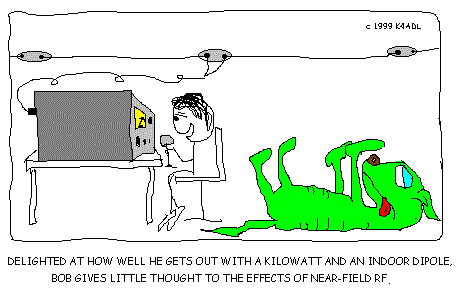 |
| From Kartoon Korner thanks to... K4ADL http://www.qsl.net/k4adl/ |